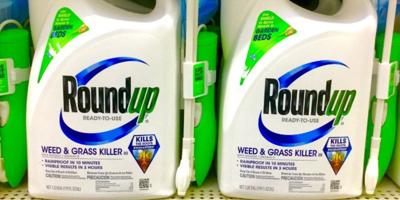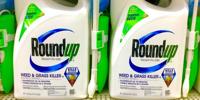
CHICAGO - A state appeals panel has agreed Monsanto doesn’t have to defend itself again in a lawsuit from plaintiffs who allege Roundup exposure caused them to develop non-Hodgkin lymphoma.
Michael Evard, Sue Wiechmann, Michael Orrel and Ronald Bryan were among many blood cancer patients who sued numerous corporations in connection with exposure to the Roundup herbicide as well as polychlorinated biphenyls, which court records call “PCBs, manmade forever chemicals that were part of various consumer and commercial products.”
Following years of corporate mergers and acquisitions, Monsanto is responsible for a defunct company’s legacy liabilities. The relevant plaintiffs, following case consolidation, filed a third amended complaint that led to a 2023 jury trial at which they alleged Monsanto was guilty of a design defect with respect to PCBs, failed to warn consumers about the dangers of Roundup usage and negligence and willful and wanton conduct regarding both.
Cook County Circuit Court Judge Sandra Ramos presided over the trial, which, according to court records, involved dispute over whether one of the jurors should remain empaneled and two plaintiffs’ attorneys who had to miss the end of the trial due to COVID. Ramos also agreed with Monsanto that the jury needed only a short form of instructions without a definition of proximate cause.
The jury found for Monsanto after less than a half day of deliberations. The plaintiffs sought a new trial. After Ramos denied that request, they brought the issue to the Illinois First District Appellate Court. Justice David Navarro wrote the panel’s opinion, filed Sept. 18; Justices Mary Mikva and Raymond Mitchell concurred. The order was issued under Supreme Court Rule 23, which restricts its use as precedent.
Regarding the short form jury instruction, Navarro said Judge Ramos found it proper “because there was only one defendant — Monsanto — at issue. And while Monsanto presented evidence of other potential causes of plaintiffs’ cancer, such as genetic replication errors, there was no evidence that the conduct of any person other than Monsanto was a concurring or contributing cause, meaning the short form ‘may’ be used.”
The panel said the long form “would have been preferable in this complex case where cause was very much at issue and likely preferable in any case where a defendant argues that something or someone else caused the plaintiff’s injury,” noting Monsanto could be found liable even if there were other causes of the plaintiffs’ cancer, Ramos’ choice doesn’t reach the standard of judicial error. Navarro pointed out plaintiffs’ closing argument asked the jury to find Monsanto was a cause of their cancer, not the only cause, which is “in essence, what was contained in the long form.”
The plaintiffs also challenged a juror whom they alleged “openly voiced bias and animosity toward them and their attorneys, seemed to prejudge the outcome of the case in Monsanto’s favor and equivocated, at best, on his duty to remain impartial,” according to Navarro. The panel said Judge Ramos twice rejected a request to remove the juror, and each time “found him fit to serve” and called that conclusion reasonable given the circumstances as well as a decision better left to the trial judge who observed proceedings. Even when the juror sent the judge a letter critiquing the plaintiffs’ attorneys preparation and performance, Navarro continued, “he did so in the context of remaining frustrated about serving as a juror and the time it was taking away from his job.”
Finally, the plaintiffs asked the panel to agree Judge Ramos should’ve granted a continuance or a mistrial after their lead attorneys — Scott Frieling and Allen Stewart — contracted Covid. Attorney Walter Cubberly led the plaintiffs’ testimony and stepped in when the others fell ill, along with help from John Boundas.
At trial, Ramos observed “we are now in the defense’s case and we were scheduled to complete this next week, and there has been no less than eight or nine lawyers.” Monsanto suggested remote proceedings for the ill attorneys, but the plaintiffs declined.
“We are right there at the finish line,” Ramos said. “This is not going to be dismissed. There is no mistrial basis. We have technology. Get it together. … We know the circumstances you have, but you are not going to convince the court that there are not viable alternatives to salvage this enormous effort made by both sides.”
Monsanto opposed the mistrial request, noting the plaintiffs still had representation from six attorneys at various firms, all “highly competent with extensive experience in toxic tort litigation,” Navarro wrote, adding “it defies credulity that other attorneys of plaintiffs did not help craft the planned cross-examinations of” the Monsanto experts who testified in person or contribute to the outline of a closing argument.
“Given that the trial was almost complete with only two live witnesses and closing arguments remaining coupled with the arduous path to the trial commencing, including the lengthy pretrial hearings and the jury selection process,” Navarro wrote, “the trial court reasonably determined that granting a continuance until (the lead attorneys) were recovered and tested negative for Covid, as plaintiffs requested, was not practical and was too inconvenient for Monsanto, the jury and the court.”
The panel also noted the plaintiffs argued the decision was prejudiced while not advancing any theories as to how the lead attorneys could or would have acted differently and presented no case law on what standard are used to grant mistrials.
“The court was placed in a difficult predicament given that the trial was nearing completion,” Navarro wrote. “Perhaps the court should have been more transparent with the jurors and told them exactly what was occurring. But understandably, the court was concerned with having a sufficient number of jurors being able to deliberate, as one juror already had to be excused during the trial for medical reasons.
"While plaintiffs did agree to accept a verdict of less than 12 jurors (as related to the issue of [the contested juror] potentially being excused), the court made a rational decision to try and not cause panic amongst the jurors and divert their focus away from the evidence at trial.”


